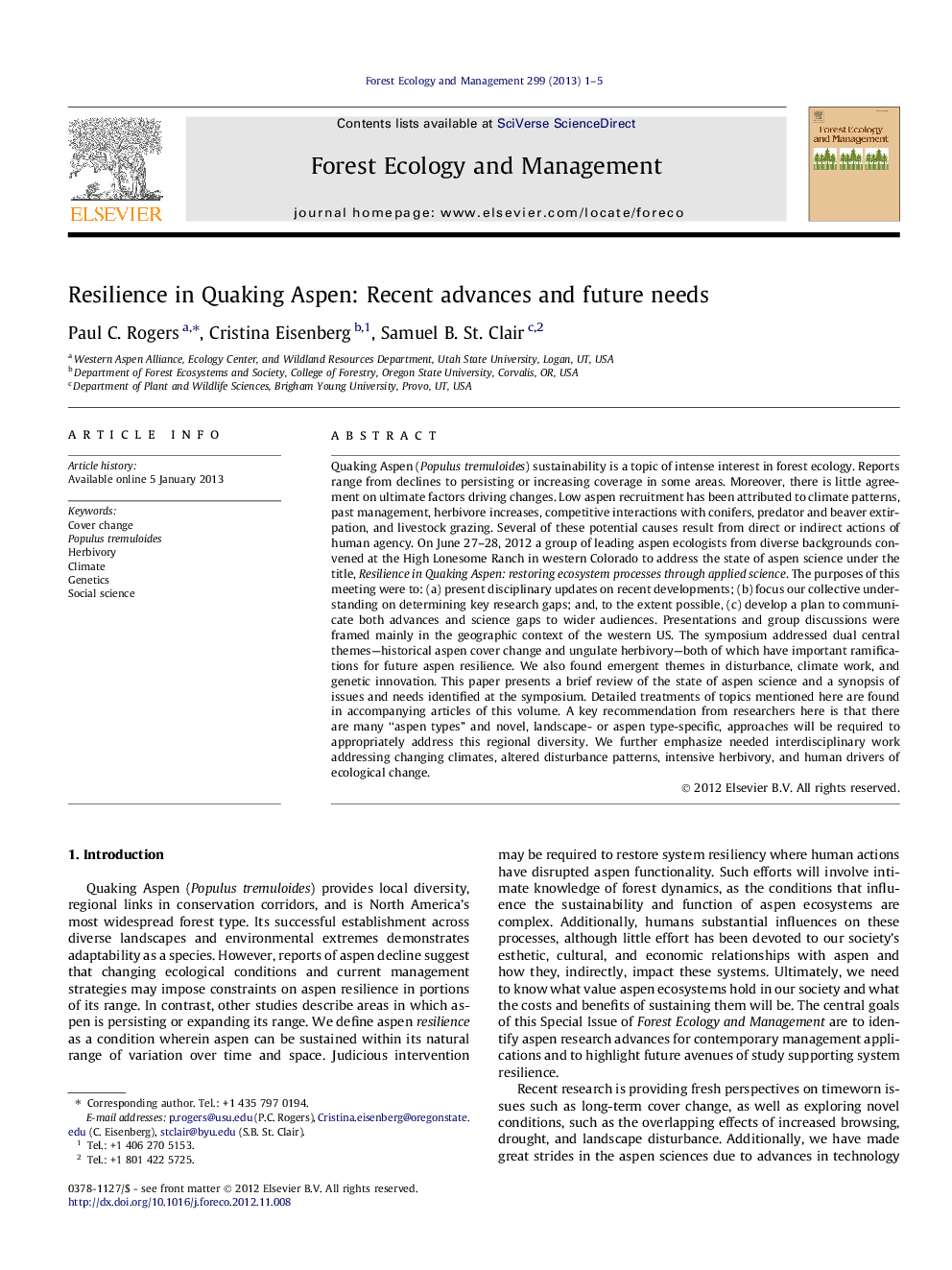| کد مقاله | کد نشریه | سال انتشار | مقاله انگلیسی | نسخه تمام متن |
|---|---|---|---|---|
| 86950 | 159225 | 2013 | 5 صفحه PDF | دانلود رایگان |

Quaking Aspen (Populus tremuloides) sustainability is a topic of intense interest in forest ecology. Reports range from declines to persisting or increasing coverage in some areas. Moreover, there is little agreement on ultimate factors driving changes. Low aspen recruitment has been attributed to climate patterns, past management, herbivore increases, competitive interactions with conifers, predator and beaver extirpation, and livestock grazing. Several of these potential causes result from direct or indirect actions of human agency. On June 27–28, 2012 a group of leading aspen ecologists from diverse backgrounds convened at the High Lonesome Ranch in western Colorado to address the state of aspen science under the title, Resilience in Quaking Aspen: restoring ecosystem processes through applied science. The purposes of this meeting were to: (a) present disciplinary updates on recent developments; (b) focus our collective understanding on determining key research gaps; and, to the extent possible, (c) develop a plan to communicate both advances and science gaps to wider audiences. Presentations and group discussions were framed mainly in the geographic context of the western US. The symposium addressed dual central themes—historical aspen cover change and ungulate herbivory—both of which have important ramifications for future aspen resilience. We also found emergent themes in disturbance, climate work, and genetic innovation. This paper presents a brief review of the state of aspen science and a synopsis of issues and needs identified at the symposium. Detailed treatments of topics mentioned here are found in accompanying articles of this volume. A key recommendation from researchers here is that there are many “aspen types” and novel, landscape- or aspen type-specific, approaches will be required to appropriately address this regional diversity. We further emphasize needed interdisciplinary work addressing changing climates, altered disturbance patterns, intensive herbivory, and human drivers of ecological change.
► Aspen research is rapidly evolving. Our aim is to address applied aspen problems.
► We present new findings and key research gaps in aspen forest management.
► The article features an overview of aspen cover change and ungulate herbivory.
► Emerging issue of importance are aspen genetics and climate modeling.
► Social sciences are important topic that requires further interdisciplinary research.
Journal: Forest Ecology and Management - Volume 299, 1 July 2013, Pages 1–5